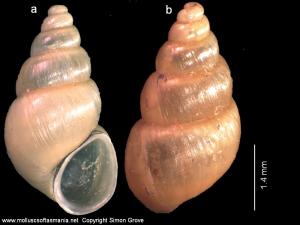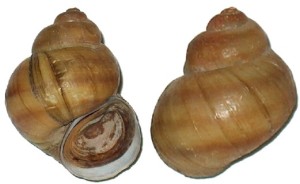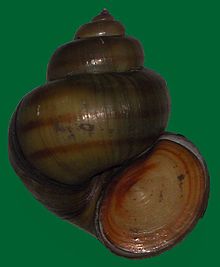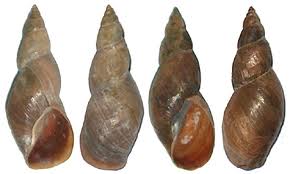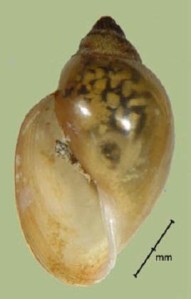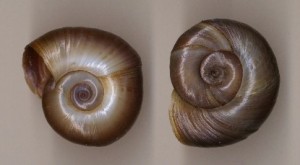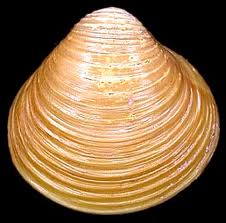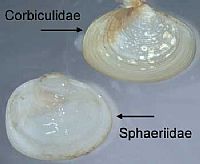(Class: Gastropoda)
## Family: HYDROBIIDAE ##
Tolerance Value : 8
3-7 mm high
opening on the right
inflated whorls
mark on operculum (‘lid’ at the opening) is a single continuous line (spiral)
——————————————————————————————————
## Family: VIVIPARIDAE ##
Tolerance Value : 6
20-60 mm high
opening on right
inflated whorls
mark on operculum has series of oval lines successively smaller inside each other (like tree rings)
——————————————————————————————————————–
Family: LYMNAEIDAE ##
Tolerance Value : 6
5-50 mm high
opening on right
no operculum
elongated
——————————————————————————————————————————–
## Family: PHYSIDAE ##
Tolerance Value : 10
5-20 mm high
opening on left
no operculum
——————————————————————————————————————————-
## Family: PLANORBIDAE ##
Tolerance Value : 7
coiled, flat shell
no operculum
———————————————————————————————————————————————–
(Class: Bivalvia)
## Family: SPHAERIIDAE ##
Tolerance Value : 8
“pea clams”
2-10 mm long
thin and fragile
color of shell – whitish/cream/light tan/gray
growth rings are close together, shell is hardly raised
feels smooth
————————————————————————————————————————————————–
## Family: CORBICULIDAE ##
Tolerance Value : 8
“Asian Clams”
35-50 mm long
thick and strong
color of shell – blackish/green/brown
growth rings far apart and raised in successive ridges
feels rough
